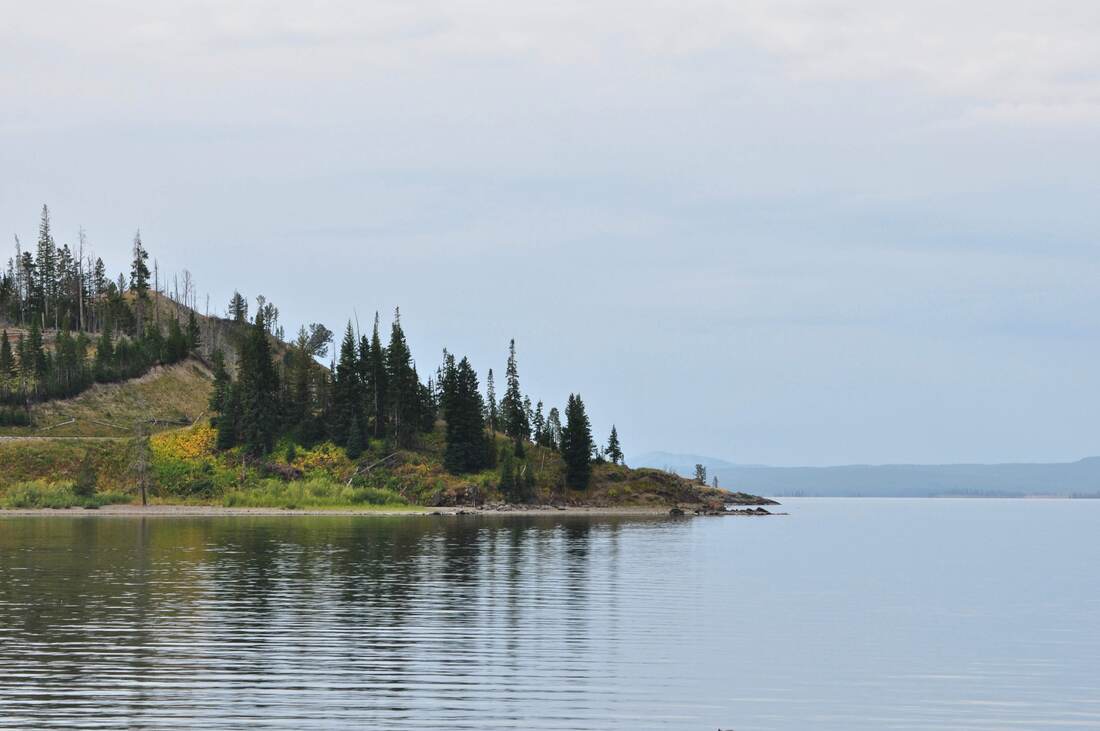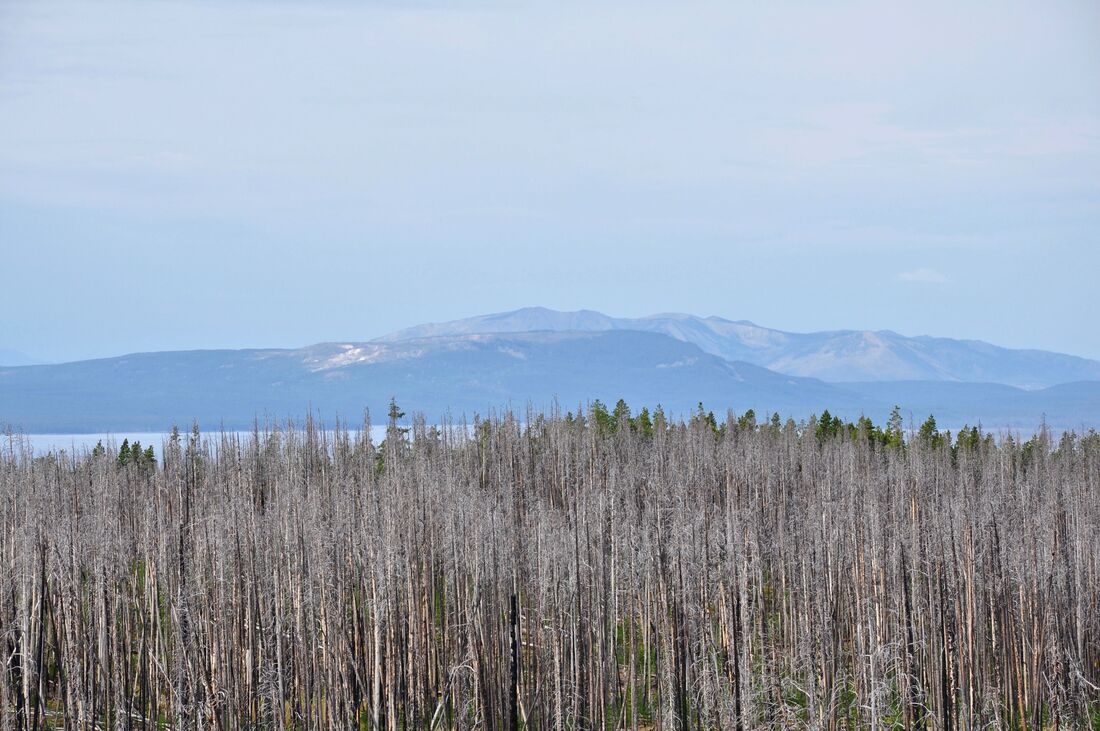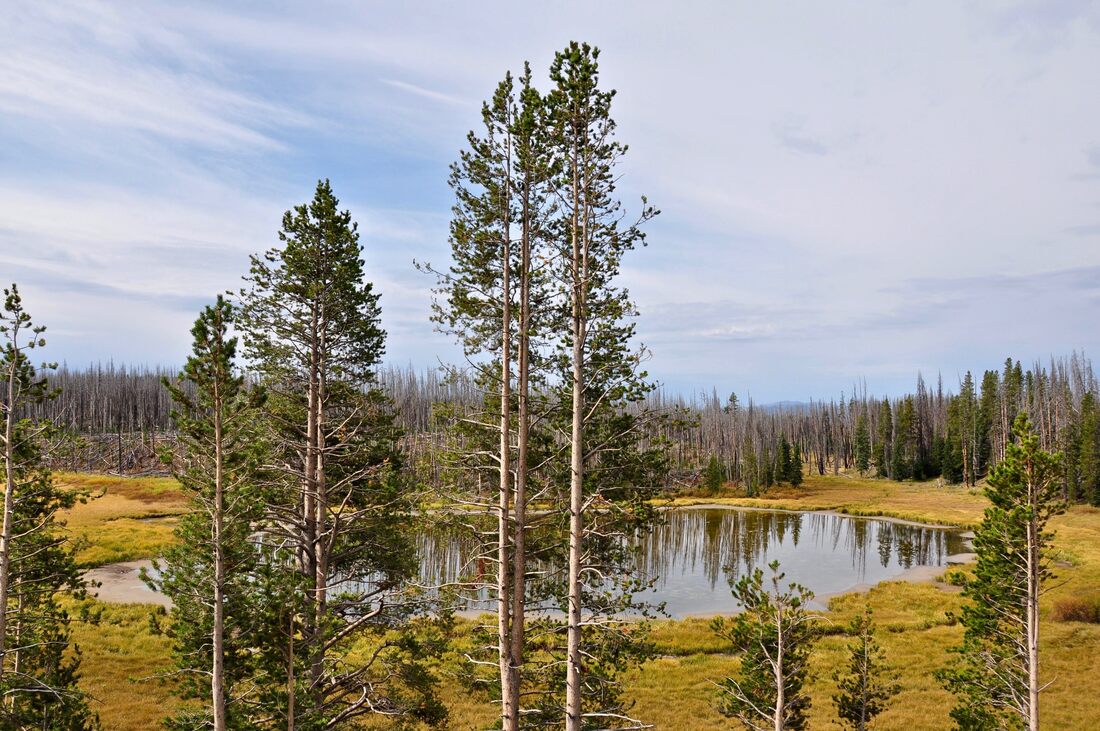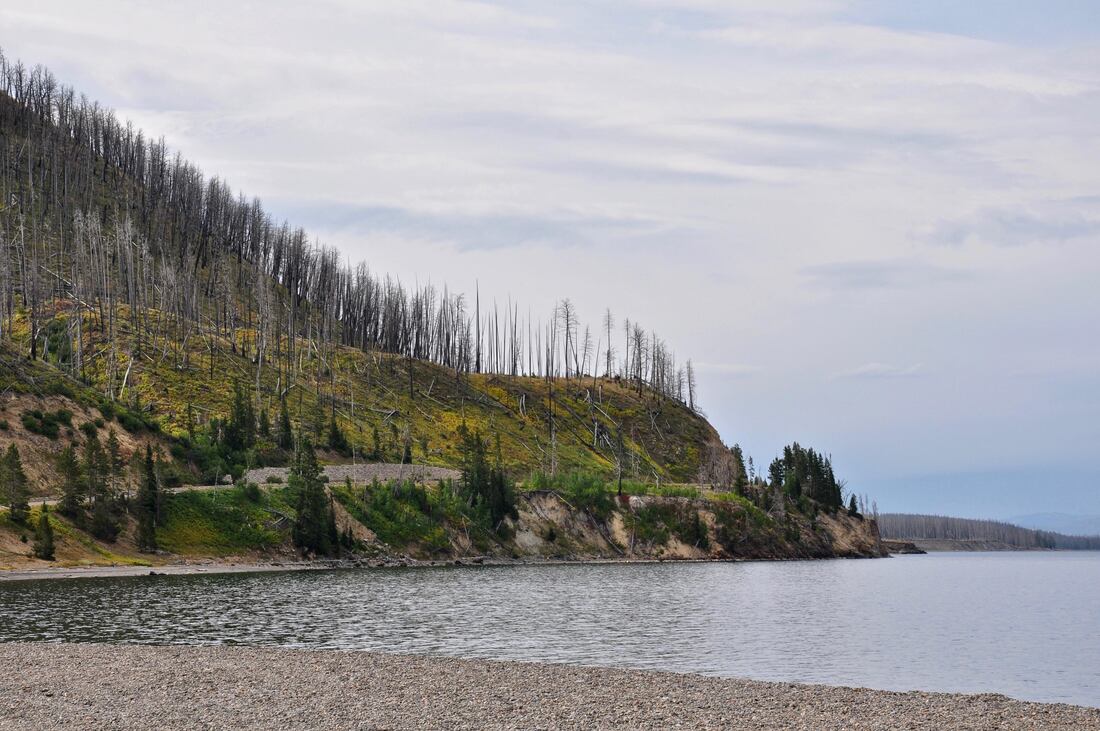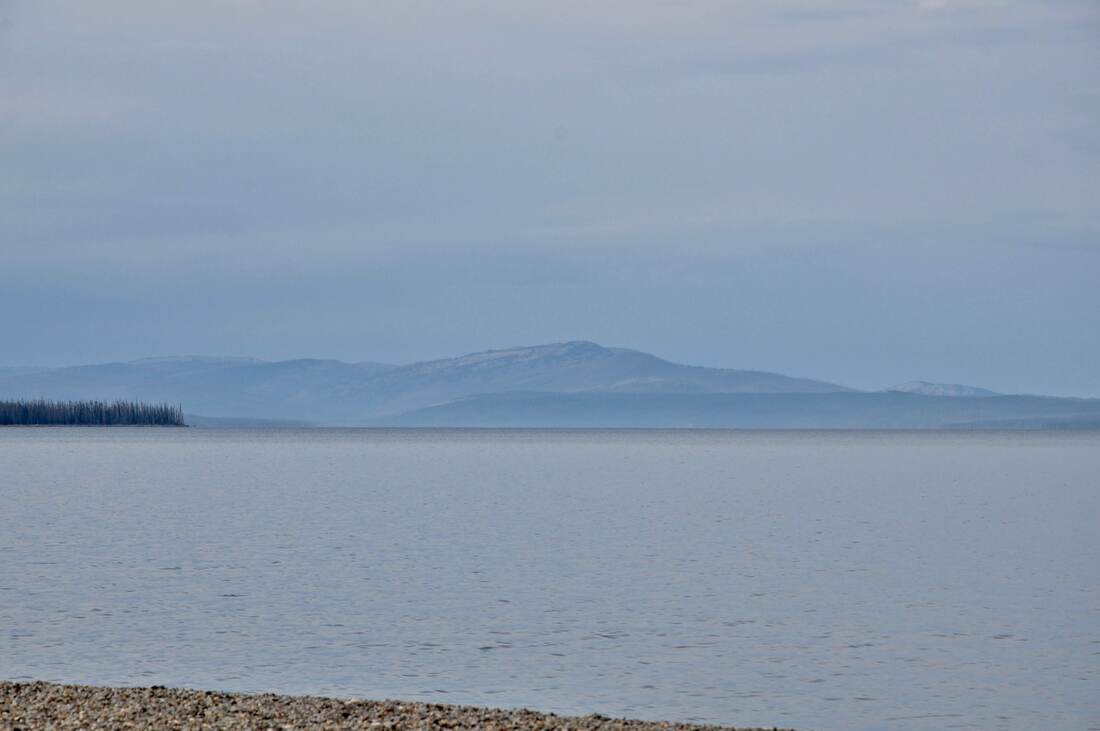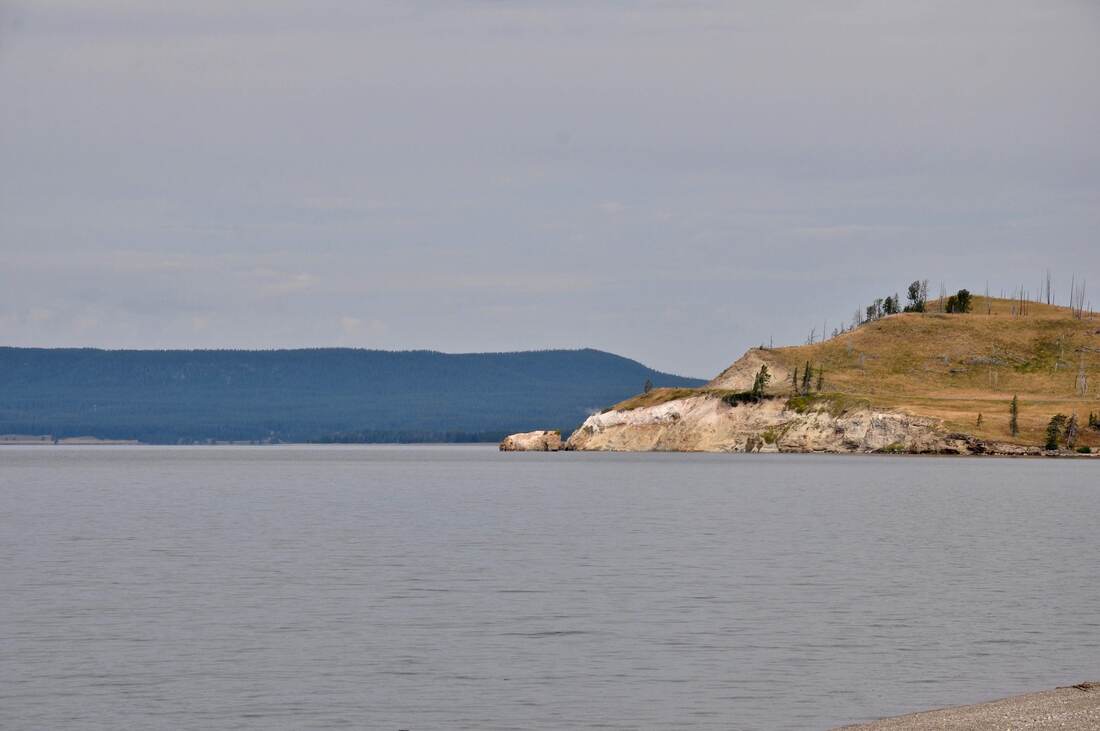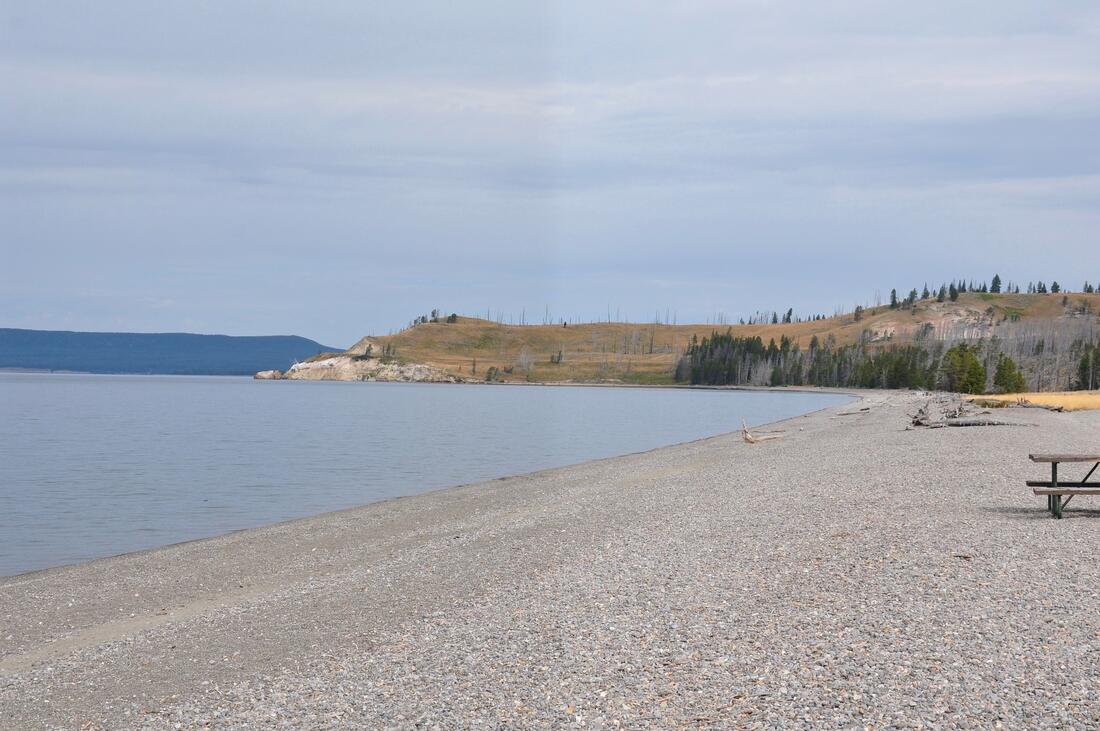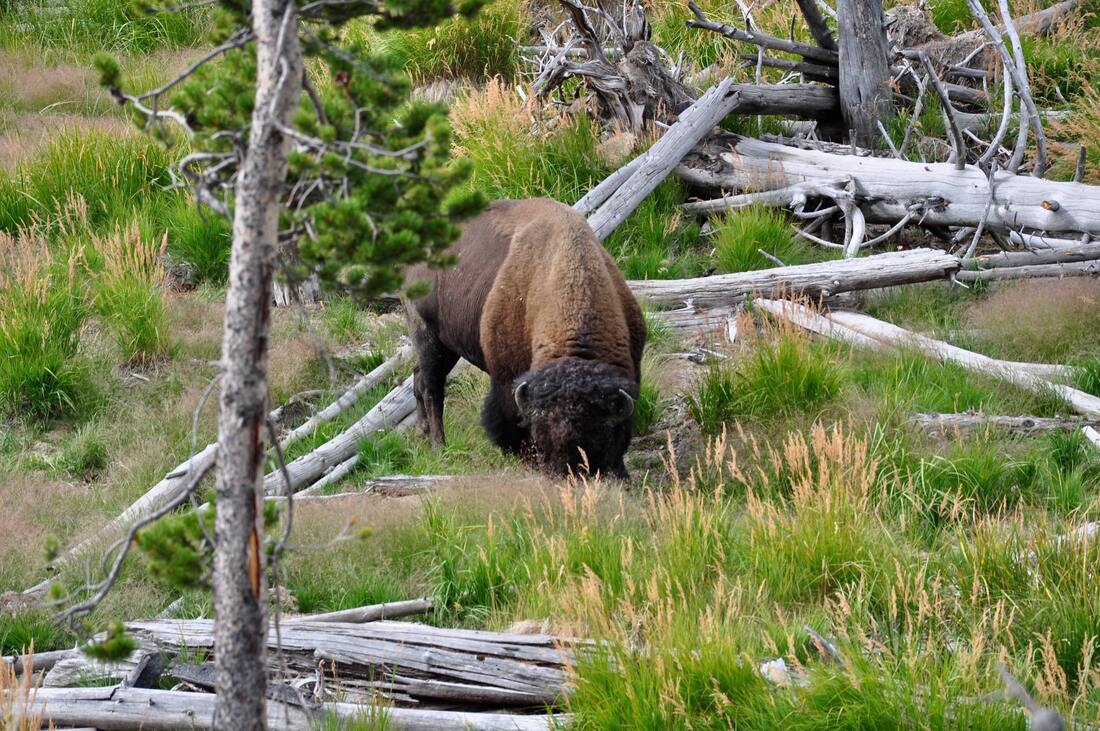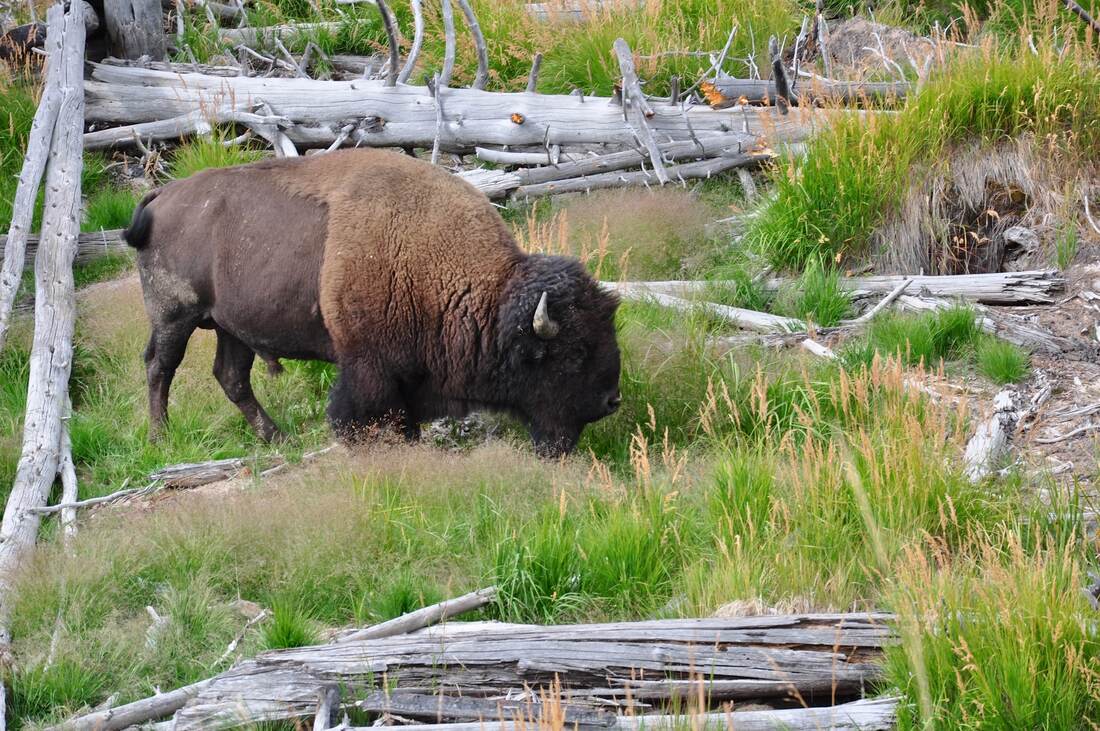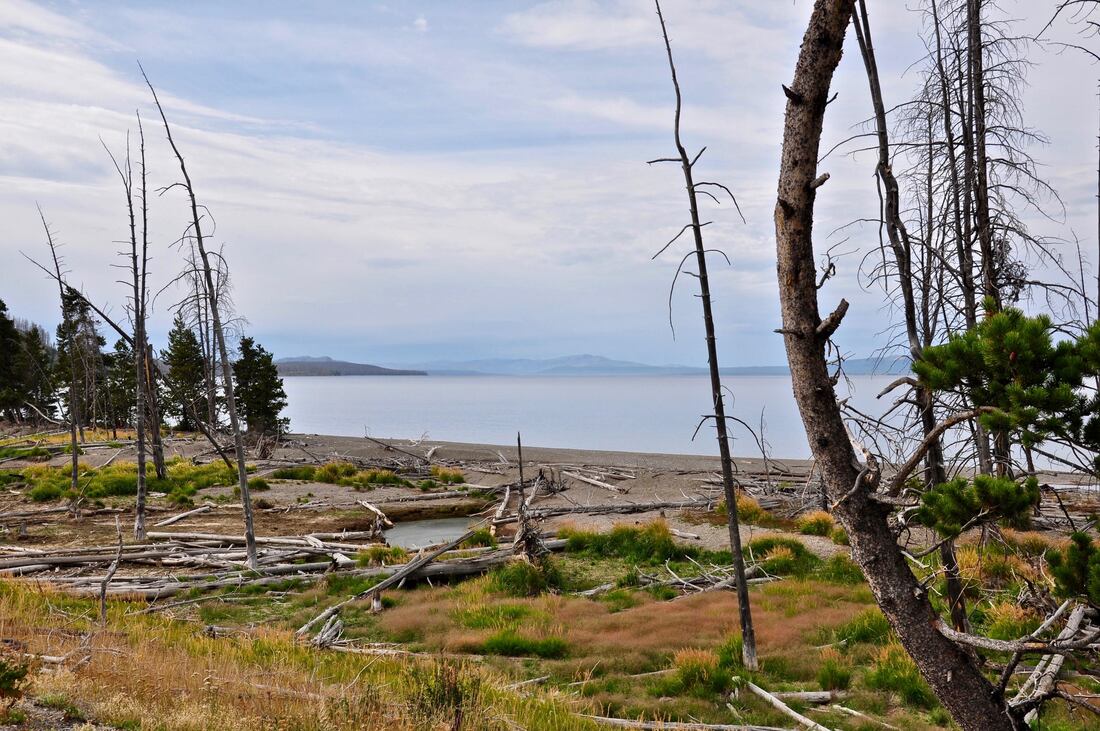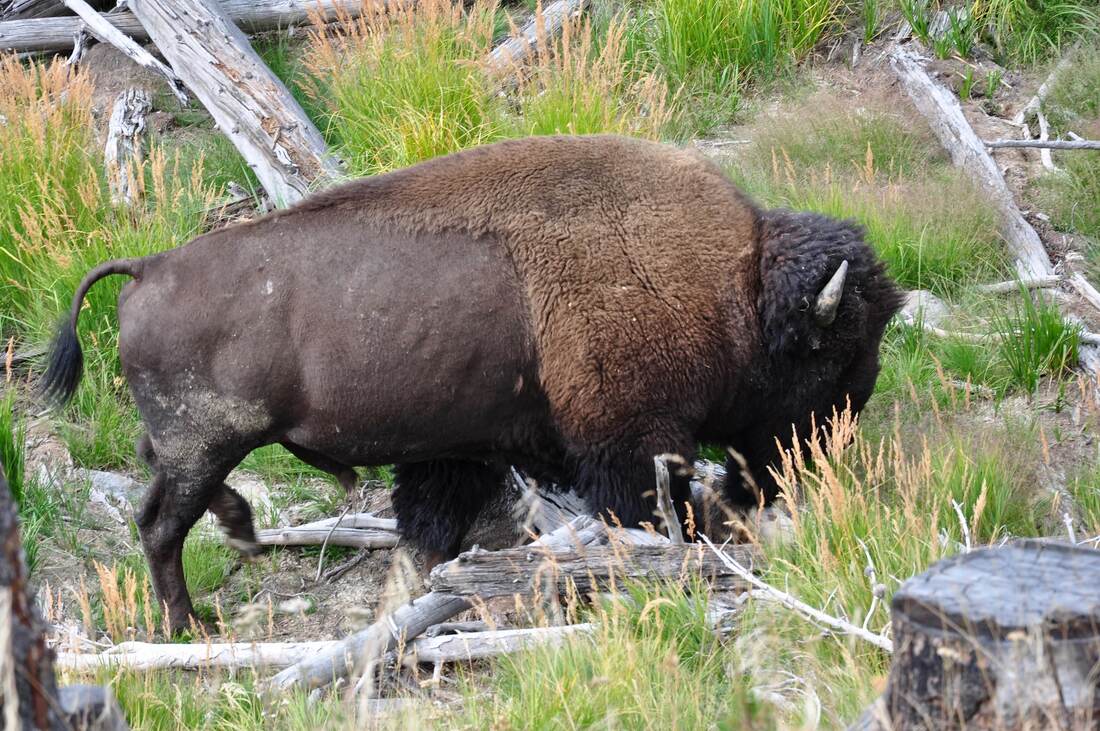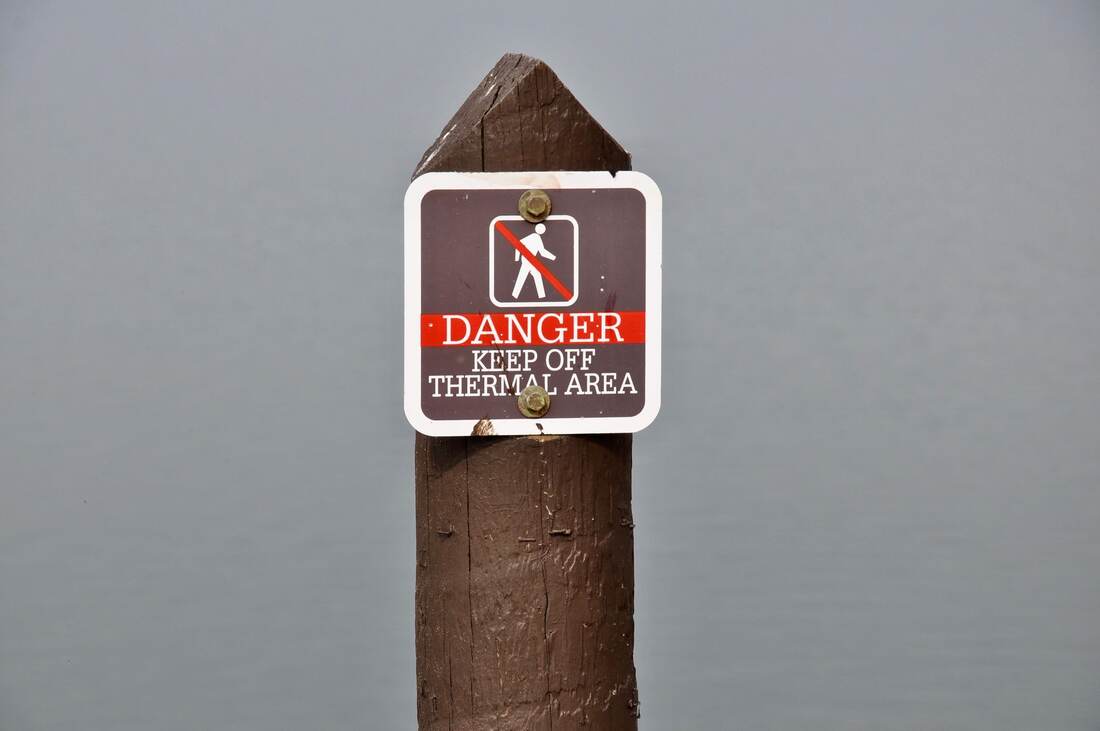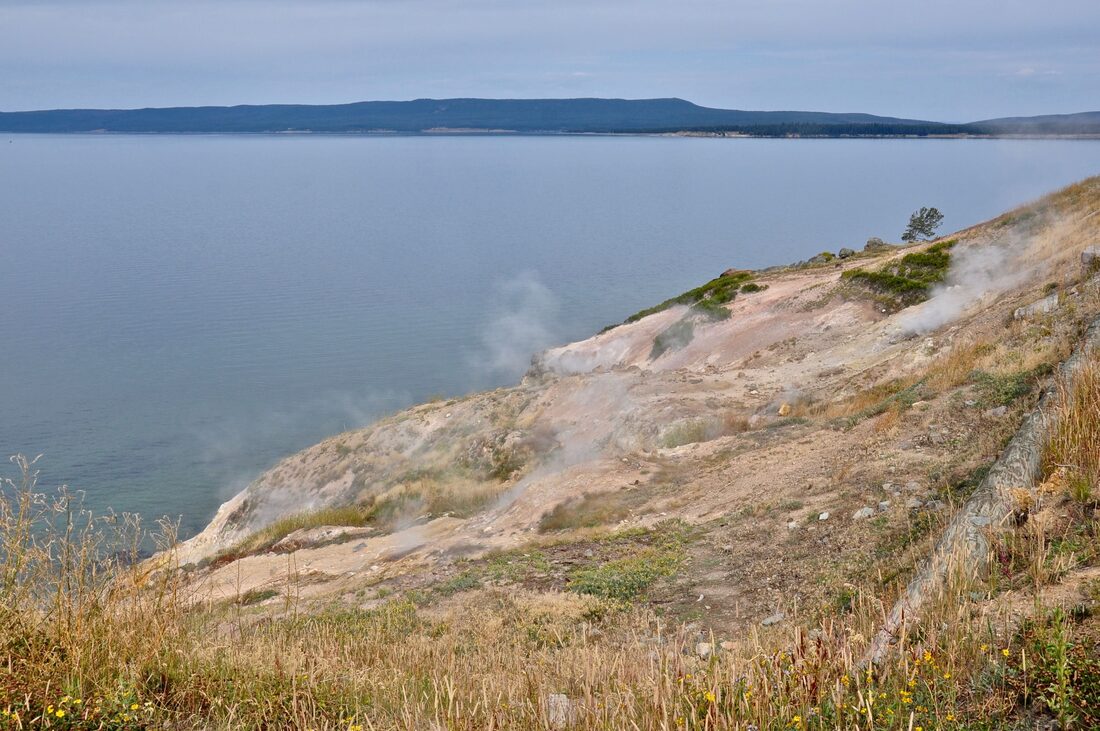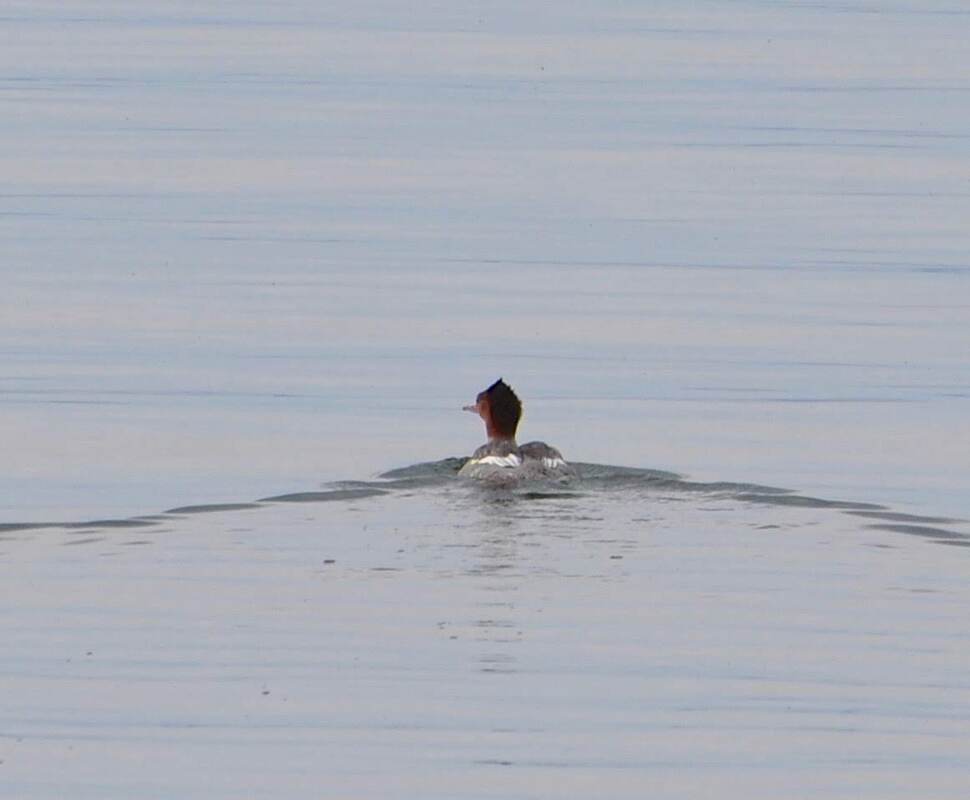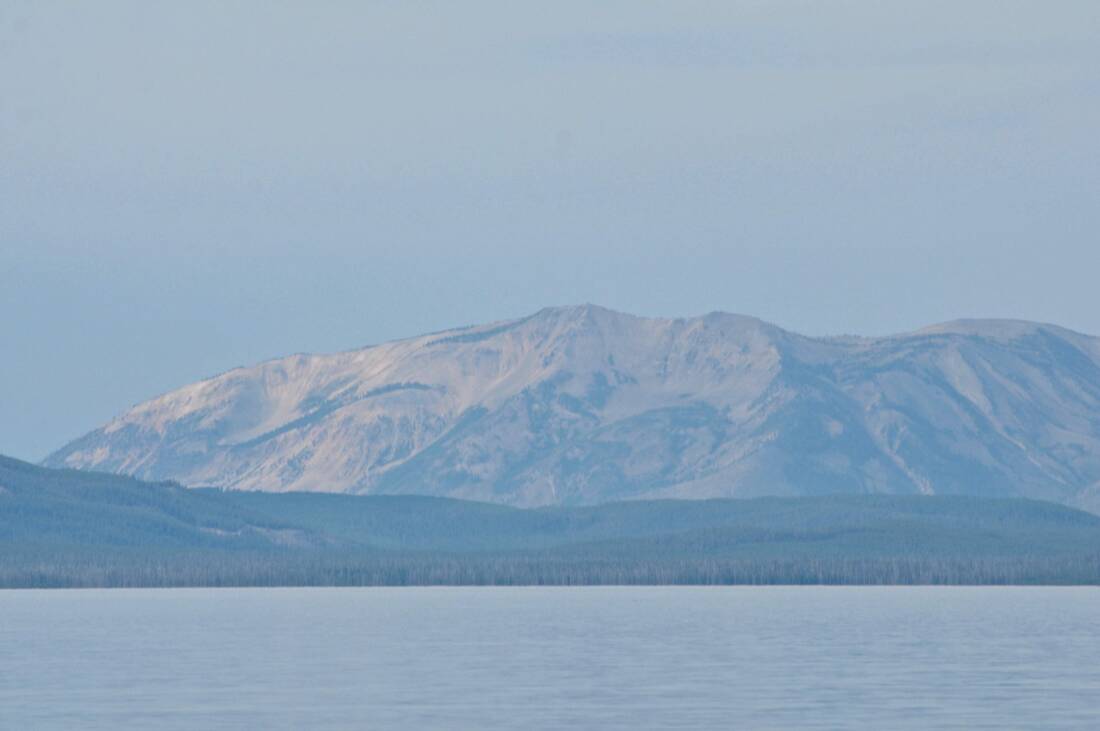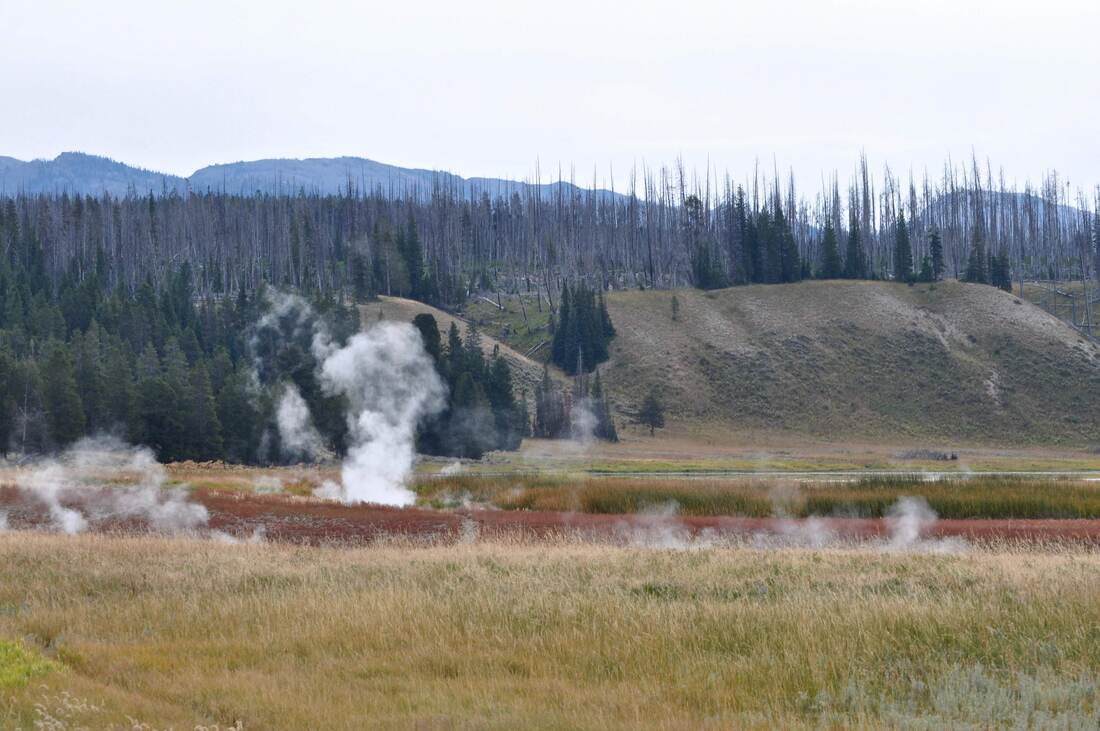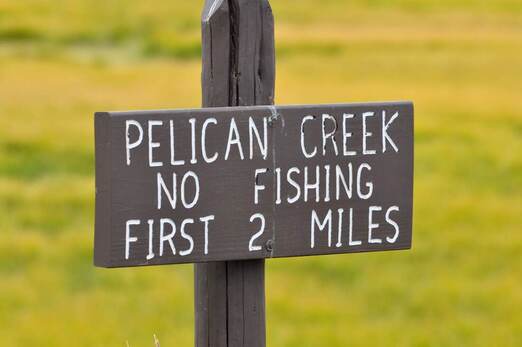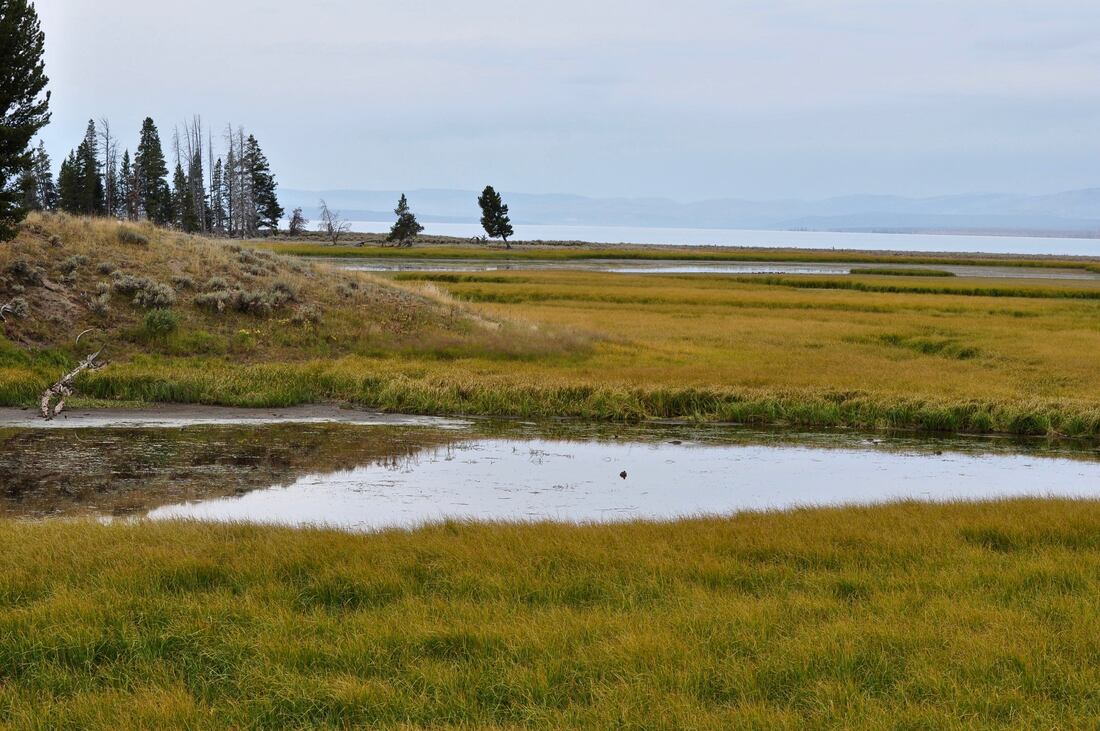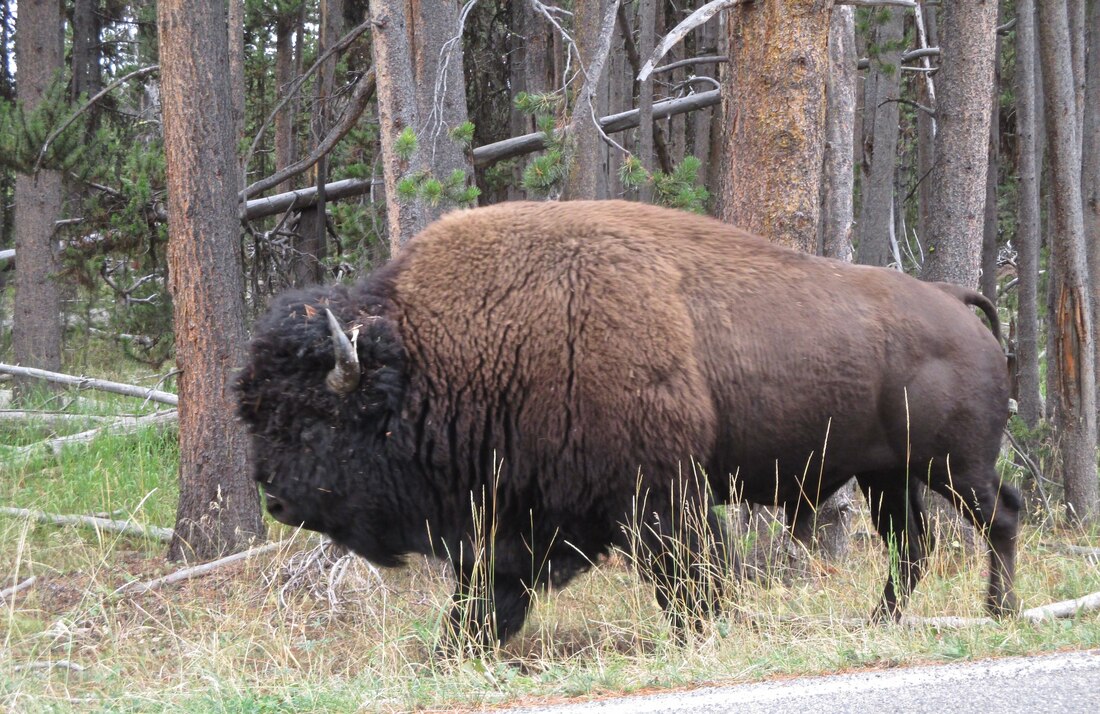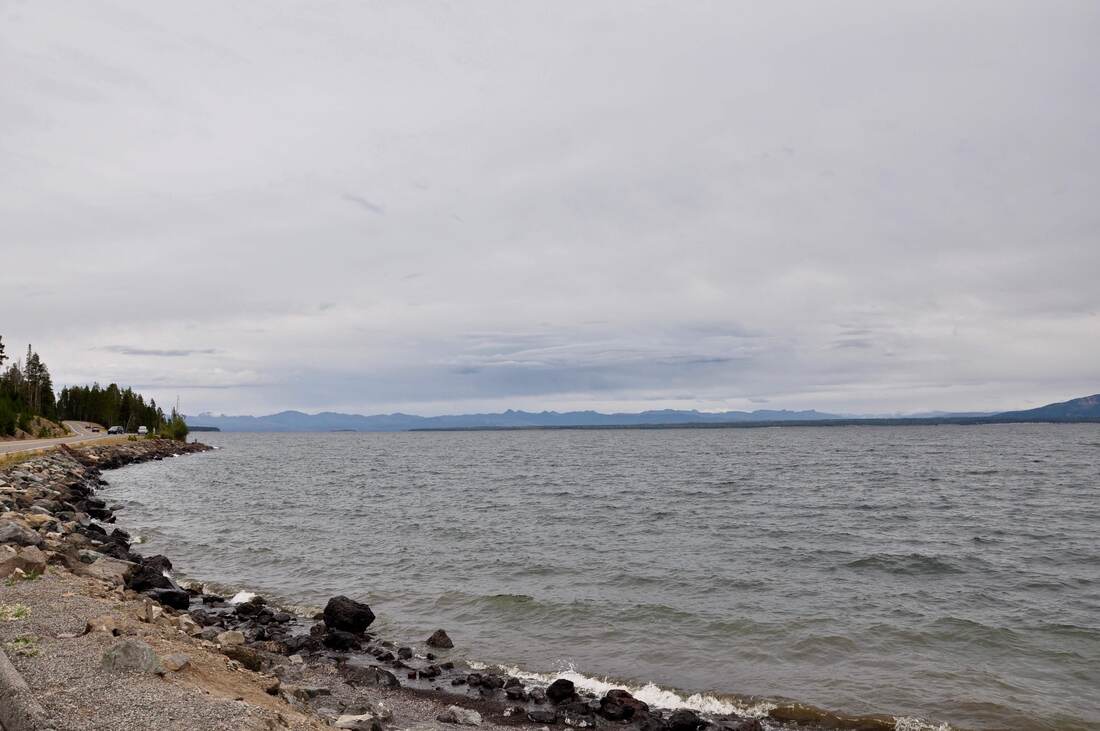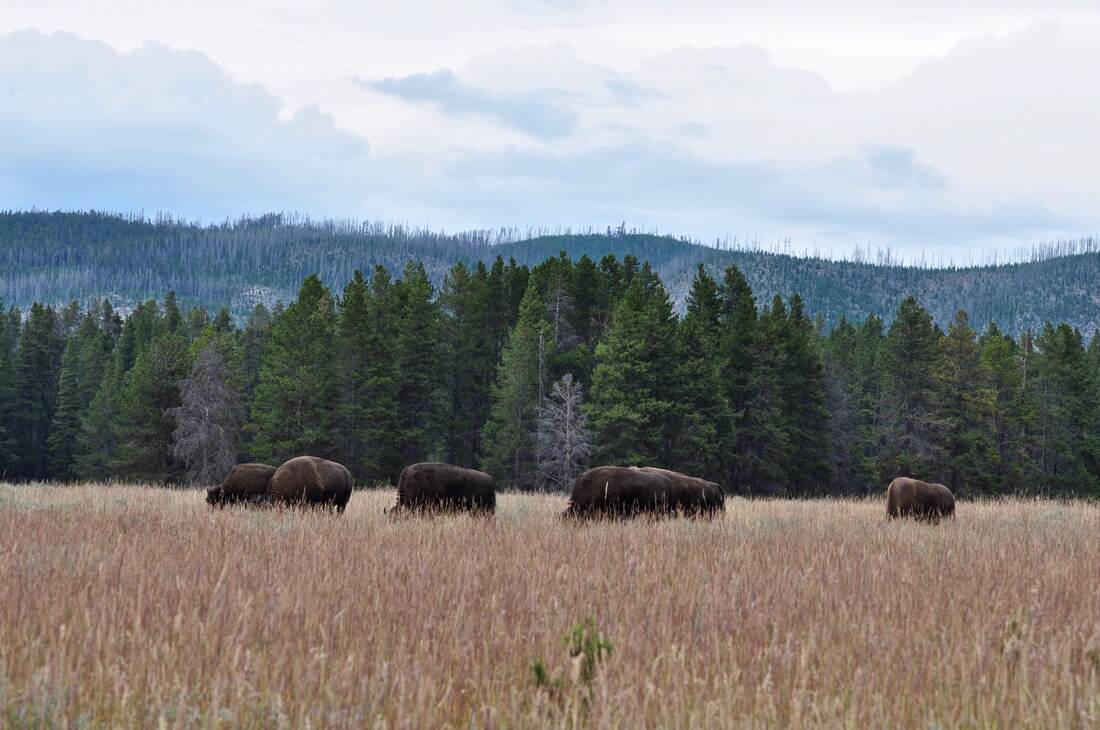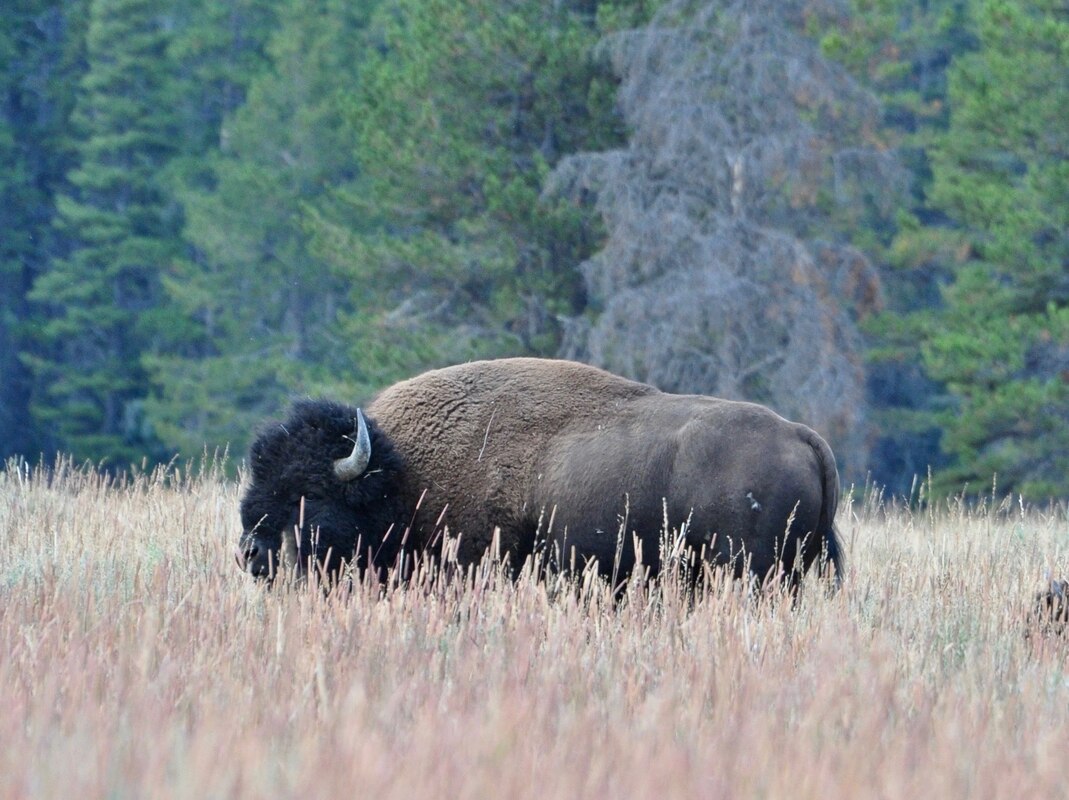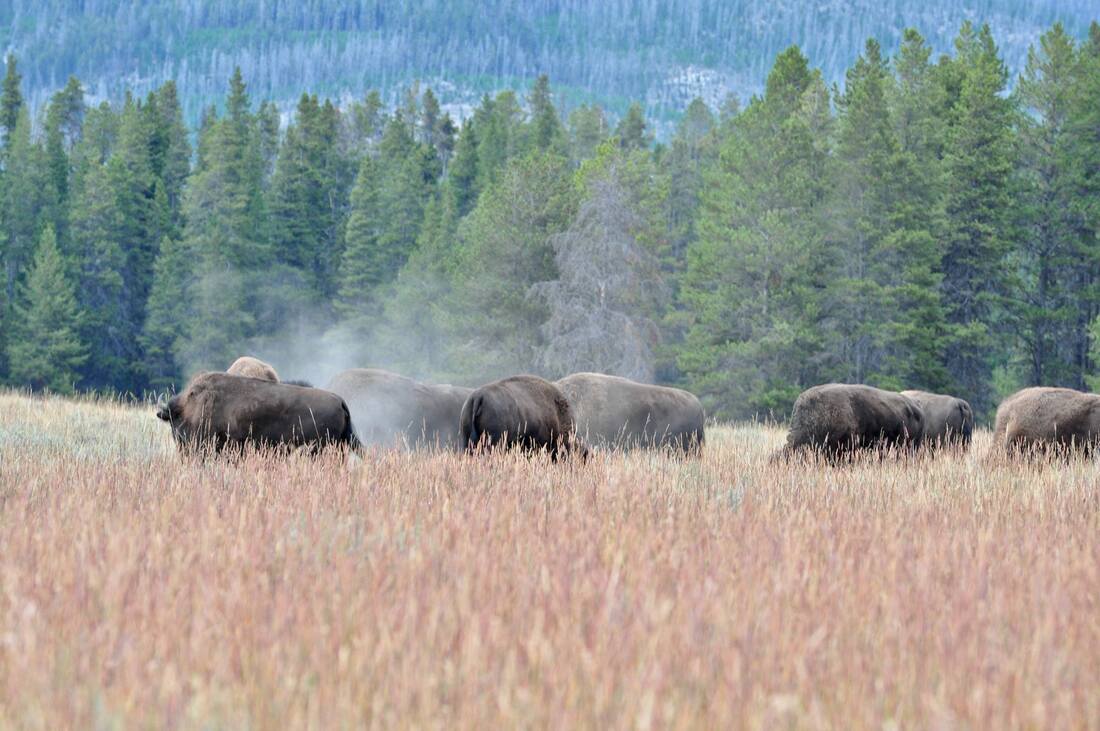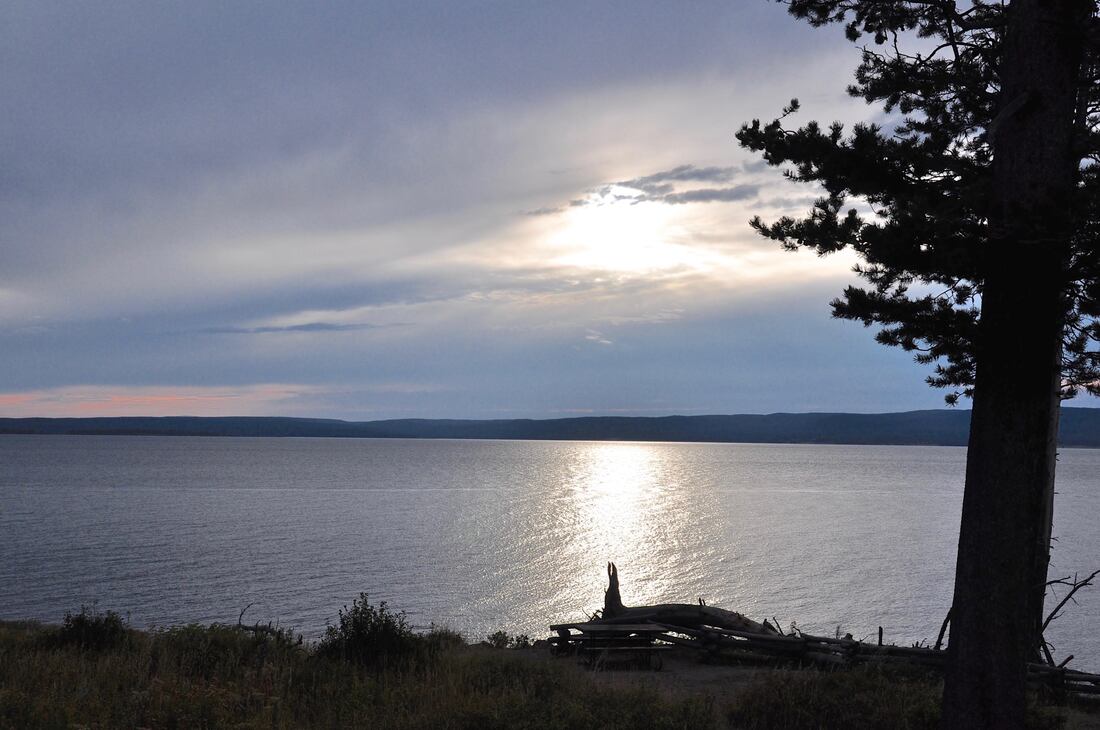|
When traveling a few miles past the Yellowstone National Park East Entrance Gate, the road going over the mountain offers panoramic views of Yellowstone Lake. The views from the high vantage point reveal the round shape of this gigantic lake, which is kind of rare in nature. The reason why Yellowstone Lake sits in a round basin surrounded by a ring of high ground is because this body of water is located inside one of the biggest super volcano crater depressions on earth. The Yellowstone Caldera last erupted about 600,000 years ago and the underground magma plume is still active. The geological oddities associated with a super volcano caldera are the main attraction at Yellowstone National Park. When coming from the east gate, the first thermal fields to be seen can be found next to the shoreline of Yellowstone Lake! The Yellowstone Caldera still has an active magma plume that causes the land to rise and fall by a few inches as the pressure fluctuates. The magma fluctuation actually changes the shape of this lake on a regular basis, so the exact size of Yellowstone Lake always comes down to an educated guess. The close proximity of the magma pocket to the surface of the earth creates many steam vents and geysers, especially on the land that surrounds Yellowstone Lake. Yellowstone Lake covers over 130 square miles and it is over 7,000 feet above sea level, so this body of water is the largest high elevation lake in North America. Those who head to the high elevations to escape the extreme heat of summer will find cooler temperatures in this National Park, but taking a swim in Yellowstone Lake is not advisable. The water temperature rarely rises above 40ºF, so a lengthy swim will certainly result in hypothermia. This ice cold lake may not exactly be good for water sports, but it is an ideal environment for canoeing, kayaking and fishing. Fishing is allowed by seasonal permit at Yellowstone Lake and this large volcanic lake is an anglers paradise. There is nothing that can be considered to be normal when canoeing on this lake, because of the views of weird geological features and the big wild animals on the shoreline can be compared to nowhere else. The fishing experience at Yellowstone Lake is a bit bizarre too, because this lake has the largest population of Cutthroat Trout in North America. What makes this odd is this type of trout is usually only found in or near the Pacific Ocean, which is a very long distance away. The explanation that scientists have found is that Yellowstone Lake was once connected to the Pacific Ocean by means of the Snake River. Apparently Cutthroat Trout swam all the way to Yellowstone Lake in ancient times and then became landlocked. Cutthroat Trout are supreme fighting fish that fly fishermen dream of catching. Unfortunately, the Cutthroat Trout in Yellowstone Lake are currently threatened by Lake Trout that were introduced to this body of water within the last hundred years. Lake Trout are not a native species in Yellowstone Lake, so the local fishing rules are designed to eliminate this threat to the local ecosystem. All Cutthroat Trout must be released alive after being caught and all Lake Trout must be killed, no matter how big or small the Lake Trout may be. For those who like eating Lake Trout, doing some fishing at Yellowstone Lake is like a dream come true! When exploring the terrain that surrounds Yellowstone Lake, staying on the well marked trails is highly recommended for safety’s sake. Not only is the wildlife dangerous in this region, the weird geological features of Yellowstone pose a threat too. Hot volcanic steam vents can be seen where the land rises from the lake and some of the surrounding meadows are actually geyser basins that can erupt without warning. Because of the extreme geothermal activity, the surface of the ground in this region can be a thin crust that is only a few inches thick. Many people that have strayed off of the hiking trails and pathways have met their maker by falling through the thin earth crust into boiling hot geothermal springs. Dangerous gases and pools of acid created by the volcanic activity also must be reckoned with in this region. For this reason, it is best to get a good trail map from the visitors center before setting off for a hike into the back country wilderness that surrounds Yellowstone Lake. The wildlife is exciting to see around Yellowstone Lake and there certainly is plenty of it. Wading birds and migrating birds make the wetland areas a bird watchers paradise. Bears are fairly easy to spot during the short summer feeding season. Deer, elk and bison can be seen feeding in the grassy meadows and borders of the forests. Moose can be viewed in the marshes too. The land surrounding Yellowstone Lake is a vast feeding ground for the local wildlife, so by all means, be sure to bring a good camera and a telephoto lens when visiting this part of Yellowstone National Park! The wildlife may seem docile at Yellowstone Lake, but the reality is that these animals are far from tame. There are many horror stories about parents that place their children next to bison or people taking selfies next to an elk that end up being gored to death when these wild animals suddenly defend their ground without warning. As a precaution, it is best to keep a safe distance. The old rules for recommended safe wildlife viewing distance for grazing animals was 25 yards and dangerous animals was 100 yards. This recommendation has become outdated, since most modern city slickers do not fully realize the danger. The new National Park Service safe wildlife viewing distance rule is much better and easier to remember. When holding the thumb up at arms length, if the animal is bigger than your thumb, then you are too close and you should cautiously back away. If the the thumb covers the wild animal, then the viewing distance is safe. The Rule Of Thumb has now been set in place and it does work! The best way to view Yellowstone wildlife safely without disturbing the creatures is to use high power binoculars or a telephoto camera. The closeup photos of the wild bison were taken with a Nikon D90 SLR camera that has an 18x100 lens and a 70x300 telephoto lens. That is enough optical power to make animals over 200 yards away look like they are at arms length after the photos are processed. Using a smart phone to take closeup photos will leave a visitor in the danger zone, which can have disastrous results, so it is best to not let social media fame be your guide. Yellowstone Lake is a good place for visitors to get acclimated to the odd nature of Yellowstone National Park. This high altitude lake is an awesome site to behold and it is so large, that viewing a sunset at this place is like being at the seashore. Yellowstone Lake definitely is a destination of its own and the unique Yellowstone environment is like no other place on earth!
0 Comments
Your comment will be posted after it is approved.
Leave a Reply. |
Leave no trace!
New!
Destination West YouTube channel! https://www.youtube.com/@DestinationWestOrg *The Destination West website upgrading project is well underway. Unique YouTube slideshows are replacing the outdated Flickr photo galleries. The new videos feature modern graphics and alternative music instrumentals that enhance the viewing experience. Some articles are being condensed, while others are getting much needed edits. As everybody knows, the bulk of the original articles and photos were published on the fly during the Covid camping venture and there were limitations. Upgrading is the way to go and more articles will receive a makeover each week until this project is completed. After that, I will be able to gather new material. There is light at the end of the tunnel!
JD Lane Archives
July 2024
Donations help the Destinaton West project continue into the future!
Go Fund Me! This website uses marketing and tracking technologies. Opting out of this will opt you out of all cookies, except for those needed to run the website. Note that some products may not work as well without tracking cookies. Opt Out of Cookies |
